Weightlifting belts are a typical sight in gyms, worn by athletes and health fans throughout heavy lifts. These belts are designed to supply assist and stability to the core and decrease again, however there’s some confusion about how and when to make use of them successfully.
On this article, we are going to discover the advantages of utilizing a weightlifting belt, find out how to put on one appropriately, and the workout routines for which they’re most helpful.
The Origins of Weightlifting Belts
A weightlifting belt is a belt worn across the waist throughout powerlifting and weightlifting workout routines to supply assist and cut back stress on the decrease again and belly muscular tissues.
It’s sometimes manufactured from leather-based or different sturdy supplies and is designed to stabilize the core throughout heavy lifts comparable to squats, deadlifts, and overhead presses. The belt works by growing intra-abdominal strain, which can assist stop harm and enhance lifting method.

The usage of weightlifting belts dates again to historic instances, with historic information indicating that belts had been utilized by historic Greeks and Egyptians throughout numerous types of weightlifting and energy coaching. These early belts had been doubtless easy leather-based belts or fabric bands worn across the waist to supply assist throughout lifting.
The 1896 Olympic Video games, held in Athens, Greece, featured the primary official weightlifting competitors in Olympic historical past. Throughout this competitors, lots of the rivals had been photographed sporting weightlifting belts. These belts had been doubtless rudimentary in comparison with trendy weightlifting belts.
In trendy instances, the usage of weightlifting belts turned extra distinguished within the mid-Twentieth century as weightlifting and energy coaching turned extra common sports activities. The belts developed to grow to be thicker and extra supportive, with the first objective of offering stability to the core and decrease again throughout heavy lifts.
As we speak, weightlifting belts are a typical sight in gyms and are utilized by athletes and leisure lifters alike to boost efficiency and cut back the danger of harm.
Varieties of Weightlifting Belts
Weightlifting belts come in several thicknesses and widths to swimsuit the distinctive private preferences of energy builders, bodybuilders, and lifters. Though they are often custom-made, the 2 primary varieties sum it up.
1. Deadlift Belt
A deadlift belt is designed for heavy deadlifts, providing most assist and limiting spinal flexion with a wider, inflexible construct. It minimizes spinal flexion and enhances stability throughout the train.
2. Weightlifting Belt
This belt is supposed for dynamic Olympic lifts just like the clear and jerk or snatch and affords a narrower and extra versatile construct. It offers assist with out limiting mobility, essential for speedy transitions and agility throughout advanced lifts. However Olympic belts aren’t only for Olympic weightlifters! They’re very talked-about amongst CrossFit fans, too.
Materials and Fastening Mechanisms
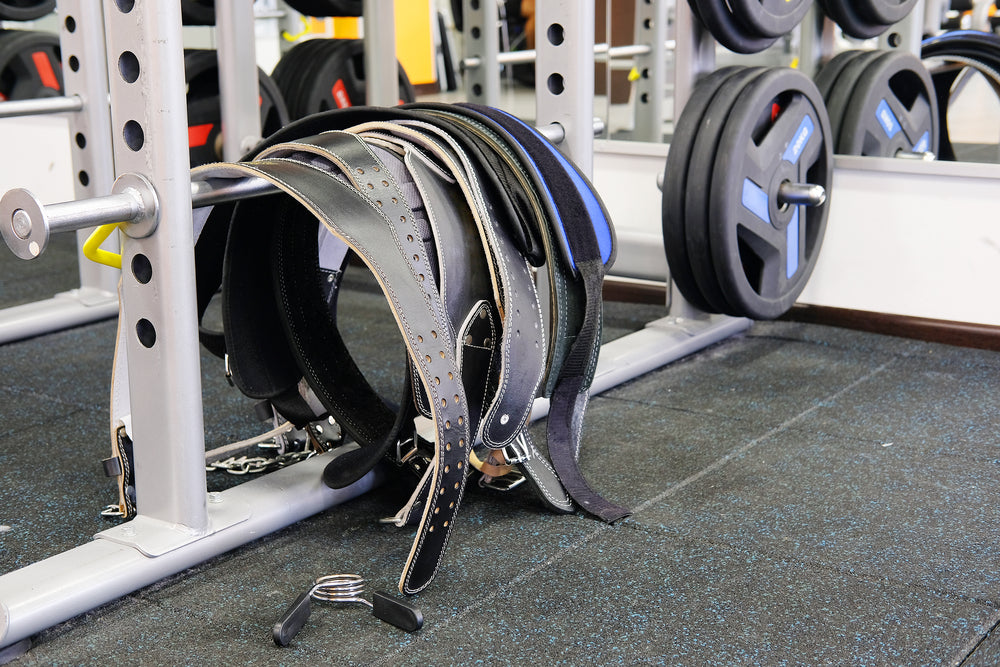
Though suede and leather-based belts are doubtless the most well-liked, weightlifting belts are additionally accessible in nylon.
They arrive with quite a lot of completely different fastening mechanisms and design selections particular to their supposed makes use of.
For top-quality leather-based belts, the most typical are single-prong and double-prong fastening choices. A prong belt features equally to an everyday buckle belt, the place you tighten and alter the belt by inserting one prong or two prongs by pre-designed holes within the belt buckle.
Lever belts use a contemporary mechanism to tighten and loosen the belt. Generally, they’re simpler to tackle and off, however are tougher to regulate the extent of tightness.
Velcro is usually used on nylon belts.
In most competitions, the usage of lifting belts is allowed, however there are strict laws relating to their specs. Earlier than buying a weightlifting belt to be used throughout competitions, contemplate the thickness, width, materials, and latching mechanism, that are all a part of the stipulations for entrants.
Why Use a Weightlifting Belt?
Weightlifting belts are primarily used to extend intra-abdominal strain and supply assist to the lumbar space throughout heavy lifts. They can assist enhance lifting method, cut back the danger of harm, and permit lifters to elevate heavier weights.
Whereas weightlifting belts could be helpful for sure lifts, comparable to squats, deadlifts, and overhead presses, they aren’t vital for each working set. Some consultants advocate utilizing a belt just for lifts that place a big load on the backbone, whereas others consider that belts could be helpful for many heavy compound lifts.
It is vital to notice that utilizing a weightlifting belt shouldn’t be an alternative choice to correct method and coaching. Weightlifting belts gained’t repair unhealthy kind. In case your lifting method just isn’t nice, making an attempt a heavy elevate, even with a belt, can rapidly result in harm.
It is also essential to make use of the belt appropriately, making certain it’s positioned correctly on the torso and tightened appropriately to supply the required assist.
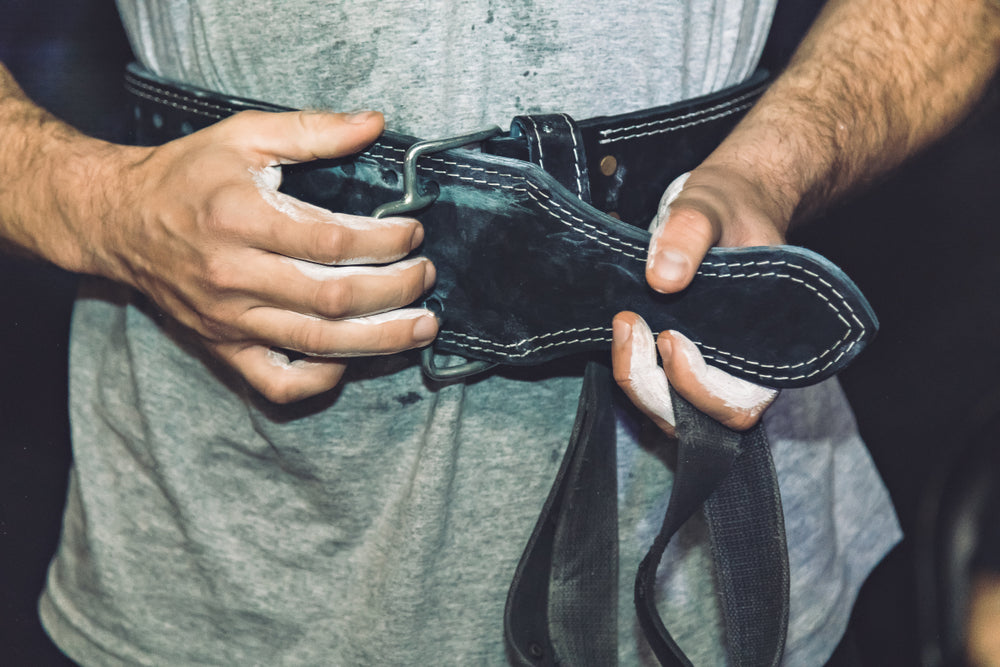
Ought to Newcomers Use Weightlifting Belts?
Weightlifting belts could be appropriate for newbie lifters, but it surely’s vital to make use of them appropriately. Newbie lifters might not want a weightlifting belt initially, as they’re nonetheless growing their energy and lifting method. Newcomers should work beltless and concentrate on constructing a strong basis of energy and correct lifting mechanics earlier than contemplating the usage of a weightlifting belt.
As soon as a newbie lifter has developed a very good base of energy and has discovered correct lifting methods, they might select to include a weightlifting belt into their coaching. Nonetheless, it is important to make use of the belt cautiously and never depend on it as a crutch.
Newbie lifters ought to nonetheless prioritize constructing core energy and utilizing correct method, with the belt getting used as a software to boost efficiency and cut back the danger of harm throughout heavy lifts.
How Does a Weightlifting Belt Work?
A weightlifting belt works by growing intra-abdominal strain, which offers assist to the decrease again and core throughout heavy lifts. While you brace your core in opposition to the belt, it creates a inflexible cylinder round your midsection, much like the best way a weightlifting belt works.
This elevated intra-abdominal strain stabilizes the backbone and reduces the stress on the decrease again, permitting you to elevate heavier weights with much less danger of harm.
Moreover, the belt can act as a proprioceptive cue to enhance biomechanics, reminding you to keep up correct posture and method throughout lifts. This may additional cut back the danger of harm by making certain that you simply keep a impartial backbone place all through the elevate.
It is vital to notice that whereas a weightlifting belt can present assist and stability, and once more, it shouldn’t be relied upon as a crutch. Correct method, coaching, and conditioning are nonetheless important for protected and efficient weightlifting.
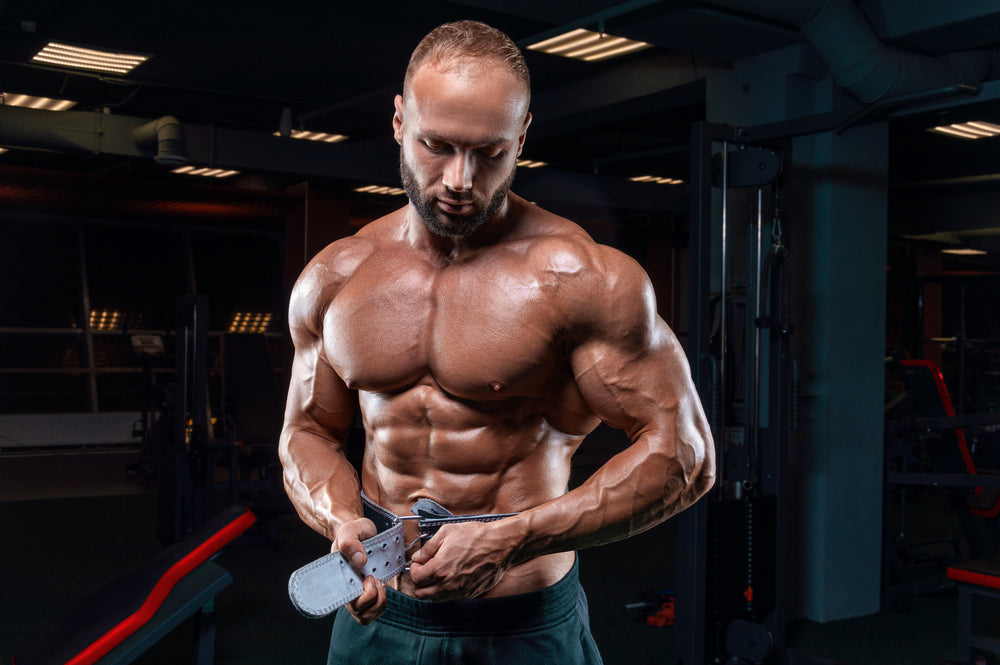
For Which Workouts Are Weightlifting Belts Most Helpful?
A weightlifting belt could be worn for many free weight compound workout routines, however it’s usually beneficial to make use of it just for workout routines the place there’s a important load on the backbone and the place sustaining correct spinal alignment is vital. It’s not essential to put on a lifting belt throughout the warm-up units.
These workout routines sometimes embrace:
-
Squats: Each again squats and entrance squats can profit from sporting a weightlifting belt, because it helps assist the decrease again and keep correct posture all through the elevate.
-
Deadlifts: Deadlifts place a heavy load on the decrease again, making them a very good candidate for sporting a weightlifting belt to supply further assist and stability.
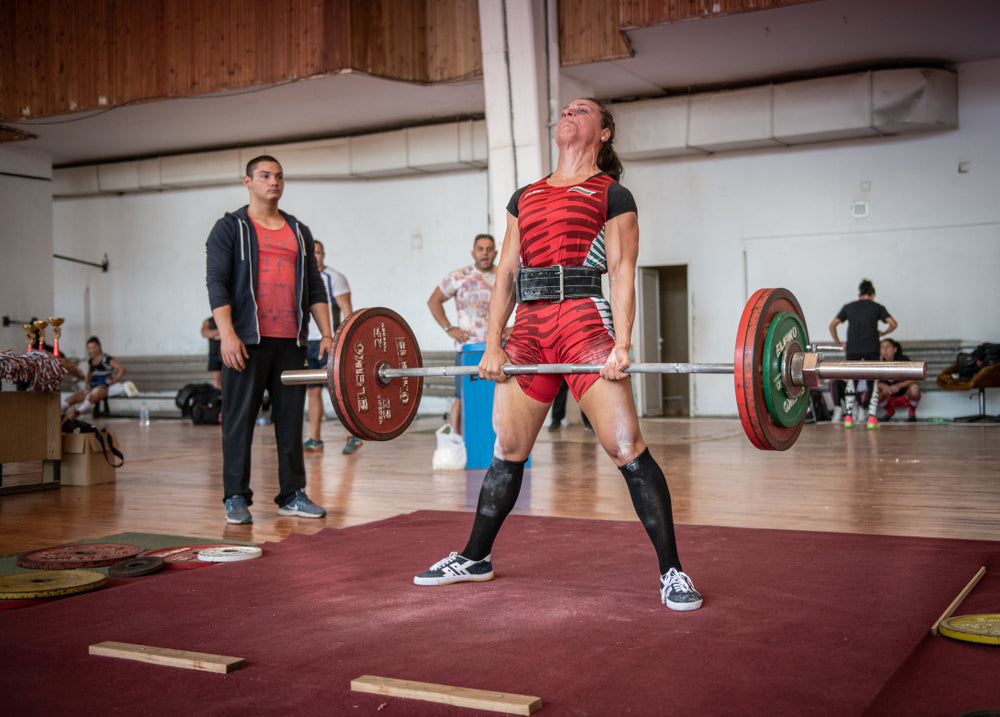
-
Barbell Rows: Sporting a lifting belt will mean you can brace your trunk higher, and it may cut back the quantity of spinal flexion throughout barbell rows.
-
Bench Presses: Some individuals discover that sporting a weightlifting belt offers further assist and helps keep correct kind throughout bench presses.
-
Overhead Presses: When performing overhead presses, particularly with heavy weights, a weightlifting belt can assist stabilize the core and forestall extreme arching of the decrease again.

-
Olympic Lifts: Lifts such because the clear and jerk and the snatch contain explosive actions and heavy masses, making a weightlifting belt helpful for offering further assist and stability.
-
Strongmen/Strongwomen Actions: These athletes carry out unbelievable feats of energy, from log presses to lifting Atlas stones. Throughout these bodily demanding and unconventional actions, lifting belts present indispensable assist by stabilizing the core and stopping potential accidents.
Athletes who prepare body weight actions or dumbbell conditioning will not discover a lifting belt useful. Belts needs to be used solely when lifting giant quantities of weight, comparable to on a barbell.
Whereas a weightlifting belt could be worn for these workout routines, it’s not vital for each train in your exercise routine. Workouts that don’t place a big load on the backbone, comparable to bicep curls or lateral raises, sometimes don’t require the usage of a weightlifting belt.
Tips on how to Put on a Weightlifting Belt?

A weightlifting belt is worn across the waist, sometimes simply above the hips and beneath the rib cage. This is a step-by-step information on find out how to put on a weightlifting belt; nevertheless, some critical lifters range belt positions barely in line with consolation throughout completely different workout routines.
-
Place the belt: Get up straight and place the belt round your waist in order that the again of the belt is centered over your decrease again.
-
Tighten the belt: Pull the belt tight in order that it matches snugly round your waist. It is best to have the ability to match a finger or two between the belt and your physique, but it surely needs to be tight sufficient to supply assist.
-
Safe the belt: Relying on the kind of belt you will have, it’s possible you’ll want to make use of a buckle, Velcro, or different fastening mechanism to safe the belt in place.
-
Modify if vital: As soon as the belt is secured, you possibly can alter the tightness as wanted. It ought to really feel supportive, however not so tight that it restricts your respiration or motion.
-
Brace your core: Earlier than lifting, take a deep breath and brace your core outward in opposition to the belt. It will assist improve intra-abdominal strain and supply further assist to your decrease again.
It is vital to notice that sporting a weightlifting belt shouldn’t be uncomfortable or limit your motion. When you expertise any discomfort or issue respiration whereas sporting the belt, it might be too tight, and it’s best to alter it accordingly.
Intra-Stomach Strain Throughout Heavy Lifts
Growing
intra-abdominal strain (IAP) throughout heavy lifts is essential for a number of causes:
-
Spinal Help: IAP acts as a pure weightlifting belt, offering inner assist to the backbone. This assist helps stabilize the backbone and reduces the danger of harm, particularly throughout heavy lifts the place the backbone is below important load.
-
Core Stability: IAP helps brace the core muscular tissues, together with the abdominals, obliques, and decrease again muscular tissues. This bracing motion helps keep a secure core, which is crucial for transferring pressure between the higher and decrease physique throughout lifts.
-
Power Switch: By growing IAP, you create a inflexible cylinder round your midsection. This cylinder permits for a extra environment friendly switch of pressure from the decrease physique to the higher physique and vice versa, enhancing total lifting efficiency.
-
Respiratory Effectivity: Correct respiration methods, such because the Valsalva maneuver, can assist improve IAP. This offers bodily assist and helps keep respiration effectivity throughout heavy lifts, which is crucial for sustaining effort and stopping fatigue.
-
Damage Prevention: By stabilizing the backbone and core, growing IAP can assist stop accidents comparable to herniated discs, muscle strains, and different lumbar points and low again ache generally related to heavy lifting.
Total, growing intra-abdominal strain is a basic facet of protected and efficient heavy lifting. Correct respiration methods, mixed with a powerful core and correct lifting mechanics, can assist maximize IAP and enhance your lifting efficiency whereas decreasing the danger of harm.
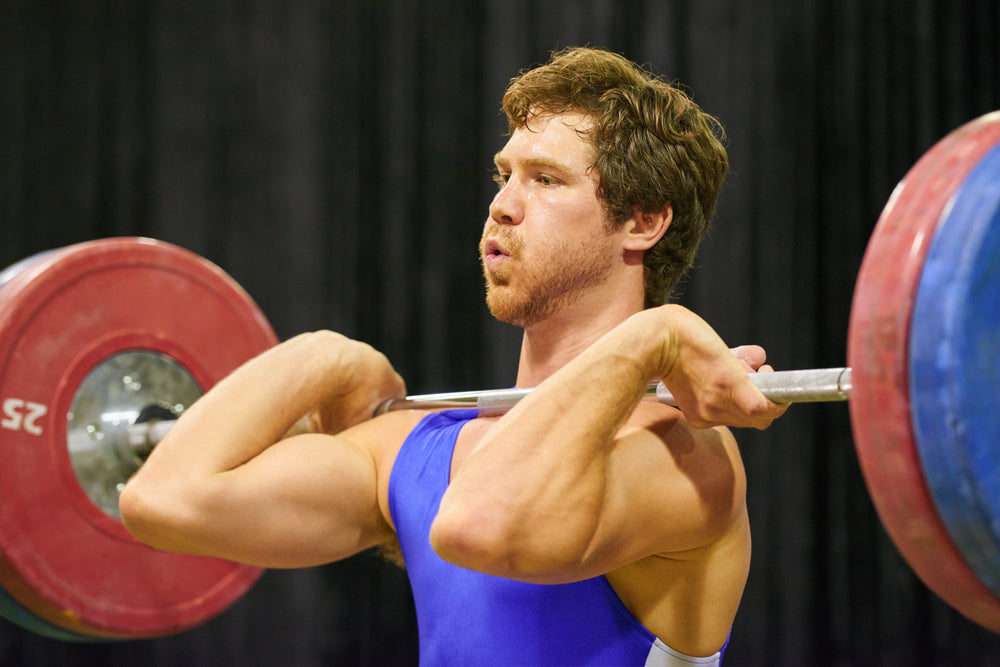
The Valsalva Maneuver
The Valsalva maneuver is a respiration method that includes making an attempt to exhale forcibly whereas maintaining the mouth and nostril closed. It’s a respiration method generally used throughout heavy lifts. It includes taking a deep breath and holding it whereas bracing the core muscular tissues.
This system will increase intra-abdominal strain, which helps stabilize the backbone and assist the decrease again throughout heavy lifts. When used at the side of a weightlifting belt, the Valsalva maneuver could be notably efficient. This may be particularly helpful for lifts that place a big load on the backbone, comparable to squats and deadlifts.
It is vital to notice that whereas the Valsalva maneuver can assist enhance lifting efficiency and cut back the danger of harm when used appropriately, it needs to be practiced with warning.
Holding your breath for too lengthy or utilizing extreme pressure throughout the maneuver can result in a sudden improve in blood strain, which could be harmful, particularly for people with sure medical situations. As all the time, it is important to make use of correct method and hearken to your physique when lifting weights.
Advantages of Sporting a Weightlifting Belt

Sporting a weightlifting belt can provide a number of advantages, together with:
— Elevated intra-abdominal strain: A weightlifting belt helps improve intra-abdominal strain, which stabilizes the backbone and reduces the stress on the decrease again throughout heavy lifts. This can assist stop harm and mean you can elevate heavier weights safely.
— Improved lifting method: By offering assist to the core and decrease again, a weightlifting belt can assist you keep correct posture and method all through your lifts. This may result in extra environment friendly and efficient lifting, with fewer situations of method breakdown.
— Enhanced efficiency: With the added assist and stability supplied by a weightlifting belt, you might be able to elevate heavier weights or carry out extra repetitions than you possibly can with out one. This may result in improved energy and muscle positive aspects over time.
— Breaking Plateaus: When you do not normally put on a lifting belt, this software could also be what it is advisable break a plateau in case your elevate progress and one-rep max has stalled.
— Decreased danger of harm: By stabilizing the backbone and decreasing the danger of extreme spinal flexion or extension, a weightlifting belt can assist stop accidents comparable to herniated discs, muscle strains, and different decrease again points.
— Psychological confidence: Sporting a weightlifting belt can present a psychological enhance by supplying you with a way of safety and confidence throughout your lifts. This can assist you push by psychological obstacles and obtain your lifting targets.
Total, whereas sporting a weightlifting belt just isn’t vital for each lifter or each train, many people discover that it may be a precious software for enhancing efficiency, enhancing security, and reaching their health targets.
Disadvantages of Utilizing a Weightlifting Belt
Whereas sporting a weightlifting belt can present a number of advantages, there are additionally some potential disadvantages to think about:
— Dependency: Some lifters might grow to be reliant on a weightlifting belt and should neglect to develop their core energy and lifting method. This dependency can result in weaker core muscular tissues and probably improve the danger of harm when not sporting the belt.
— Discomfort: Sporting a weightlifting belt that’s too tight or positioned incorrectly could be uncomfortable and limit your respiration or motion. It is important to regulate the belt correctly to keep away from discomfort.
— Decreased mobility: A weightlifting belt can restrict your vary of movement, notably in workout routines that require a big quantity of trunk rotation, comparable to twisting actions or sure athletic actions.
— False sense of safety: Whereas a weightlifting belt can present assist and stability, it doesn’t assure safety in opposition to harm. It is nonetheless essential to make use of correct method and never rely solely on the belt for security.
— Value: High quality weightlifting belts could be costly, so value could also be an element for some lifters.
Total, whereas there are potential disadvantages to sporting a weightlifting belt, many lifters discover that the advantages outweigh the drawbacks, notably when used appropriately and at the side of correct method and coaching.
Dietary supplements for Added Advantages

Weightlifters typically use dietary supplements to assist their coaching and efficiency. Dietary supplements can assist weightlifters in a number of methods:
— Muscle Constructing
Protein dietary supplements, comparable to whey protein, can assist present the required constructing blocks for muscle restore and progress, particularly after intense exercises.
— Vitality and Efficiency
Pre-workout dietary supplements sometimes include components like caffeine, beta-alanine, and creatine, which can assist enhance power ranges, endurance, and total exercise efficiency.
— Restoration
Put up-workout dietary supplements might include components like branched-chain amino acids (BCAAs) or glutamine, which can assist cut back muscle soreness and
— Nutrient Help
Some dietary supplements, comparable to
multivitamins or fish oil, can assist fill in nutrient gaps within the eating regimen, making certain that weightlifters have all the required nutritional vitamins and minerals for optimum well being and efficiency.
— Joint Well being
Dietary supplements like glucosamine or
collagen included in your stack might assist assist joint well being, which is vital for weightlifters who put their joints below important stress throughout coaching.
It is vital to notice that whereas dietary supplements could be helpful, they need to not exchange a balanced eating regimen. It is best to seek the advice of a healthcare skilled or a registered dietitian earlier than beginning any new complement routine to make sure they’re protected and applicable on your particular person wants.
Conclusion
In conclusion, a weightlifting belt is usually a precious software for enhancing efficiency and decreasing the danger of harm throughout heavy lifts. When worn appropriately and used at the side of correct method and coaching, a weightlifting belt can present the assist and stability wanted to elevate heavier weights safely.
Nonetheless, it’s important to make use of a weightlifting belt judiciously and never grow to be depending on it for each elevate. By understanding how and when to make use of a weightlifting belt, you possibly can maximize its advantages and take your lifting to the following degree.